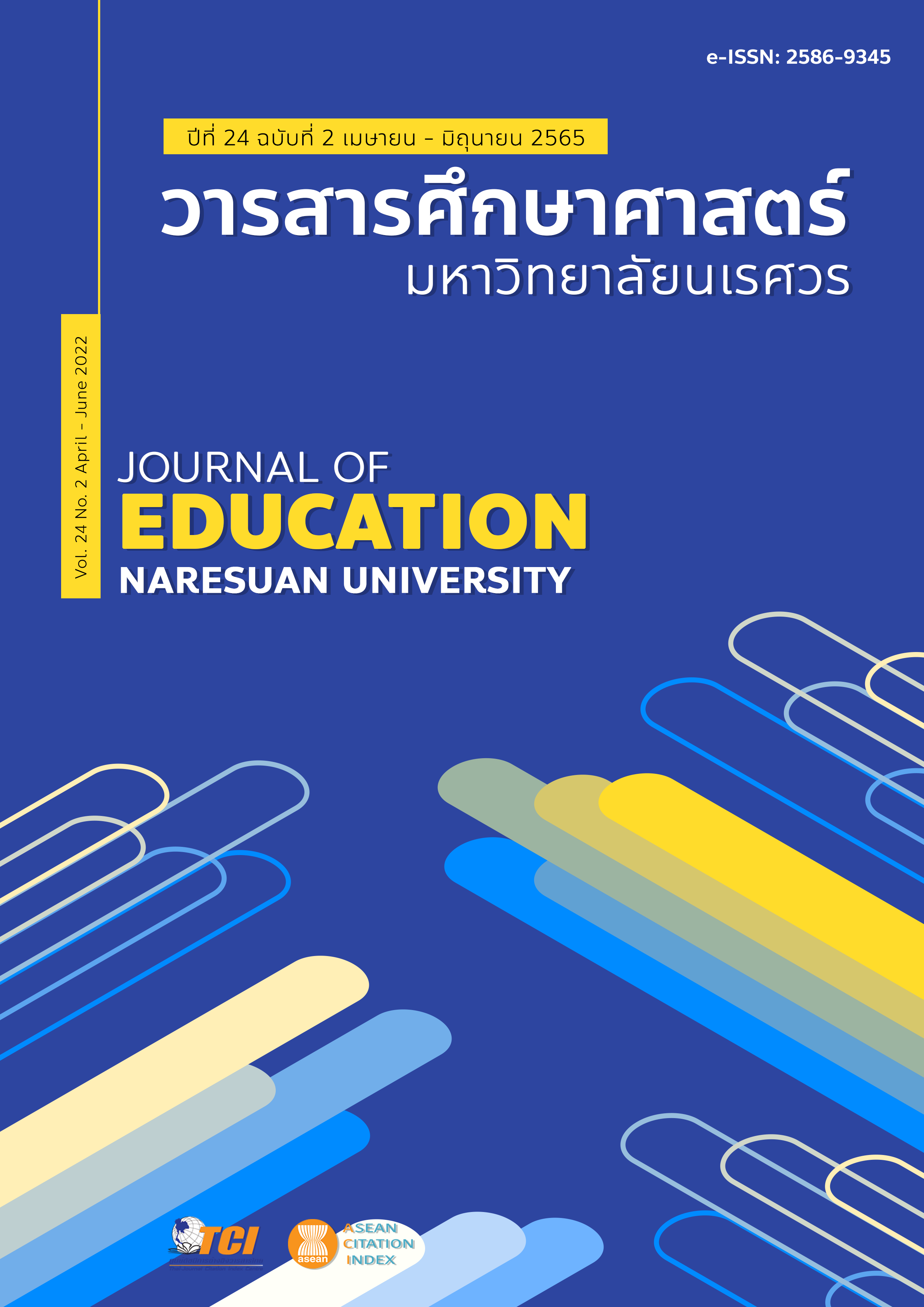ETHICAL LEADERSHIP PRACTICES OF OUTSTANDING FILIPINO SCHOOL HEADS
Main Article Content
Abstract
The present study utilized the phenomenological method of research to look at the narratives of Gawad Ginintuang Leon Awardees for Outstanding School Heads have learned and reflect on how they felt about the phenomenon. Through a validated semi-structured interview guide, the ethical leadership practices of four outstanding school heads were explored. In the pillar of model integrity and commitment, the awardees manifested common ethical leadership practices through modeling respect, observing honesty in their dealings, dedication to their profession, enthusiasm in delivering services and performing excellently. In the context of nurturing encouraging environment, the awardees attested common ethical leadership practices through establishing a harmonious relationship, sensitivity to the needs of others, flexibility, and having humane resolutions to issues/conflicts, employing effective communication and advocate professional growth. Under the pillar of upholding trust and fair treatment, the recipients showed common ethical leadership practices like being a role model, establishing fair selection, and promotion systems, good feedbacking system, promoting equality and equal opportunity and good financial management. Lastly, in support of encouraging inclusive involvement and transparency, the awardees shared common goals, collaborative planning, and delegation of tasks, paying attention to the concerns of others, and establishing a strong partnership with stakeholders. This study would help the school and community come up with the ideal qualities of a Gawad Ginintuang Leon Awardee that shall help them come up with the best practices, and deal with challenges with creativity leading to a better leader quality. This study could also serve as a basic skeleton for the school and community in qualifying Gawad Ginintuang Leon Awardees for Outstanding School Heads showcasing best practices, creativity, and values of ethical leadership.
Article Details

This work is licensed under a Creative Commons Attribution-NonCommercial-NoDerivatives 4.0 International License.
The owner of the article does not copy or violate any of its copyright. If any copyright infringement occurs or prosecution, in any case, the Editorial Board is not involved in all the rights to the owner of the article to be performed.
References
Aydin, A., Sarier, Y., & Uysal, S. (2013). The effect of school principal’s leadership styles on teachers organizational commitment and job satisfaction. Educational Sciences: Theory and Practice, 13(2), 806-811.
Ameen, A., & Ahmad, K. (2012). Towards harnessing financial information systems in reducing corruption: A review of strategies. Australian Journal of Basic and Applied Sciences, 6(8), 500–509.
Ameen, A., Almari, H., & Isaac, O. (2018). Determining underlying factors that influence online social network usage among public sector employees in the UAE. In International Conference of Reliable Information and Communication Technology (pp. 945-954). Springer, Cham.
Baker, E. L. (2013). Leadership and management—guiding principles, best practices, and core attributes. Journal of Public Health Management and Practice, 20(3), 356-357. DOI: 10.1097/PHH.0000000000000063
Brown, M. E., Treviño, L. K., & Harrison, D. (2005). Ethical leadership: A social learning perspective for construct development and testing. Organizational Behavior and Human Decision Processes, 97(2), 117-134. DOI: 10.1016/j.obhdp.2005.03.002
Bush, T. (2008). Leadership and management development in education. London: SAGE.
Creswell, J. (1998). Research design qualitative, quantitative and mixed methods approaches. London: Sage Publications.
Cuilla, J. B. (1998). Leadership ethics: Mapping the territory. In J. B. Cuilla (Ed.), Ethics, The Heart of Leadership (pp. 3-25). Westport, CT: Quorum Book.
Ehrich, L., Harris, J., Klenowski, V., Smeed, J., & Spina, N. (2015), The centrality of ethical leadership. Journal of Educational Administration, 53(2), 197-214. https://doi.org/10.1108/JEA-10-2013-0110
Etikan, I., Musa, S. A., & Alkassim, R. S. (2016). Comparison of convenience sampling and purposive sampling. American Journal of Theoretical and Applied Statistics, 5(1), 1-4.
Hartog, D. N. D. (2015). Ethical leadership. Annual Review of Organizational Psychology and Organizational Behavior, 2(1), 409- 434.
Hegarty, N., & Moccia, S. (2018). Components of ethical leadership and their importance in sustaining organizations over the long term. Journal of Values-Based Leadership, 11(1). https://doi.org/10.22543/0733.111.1199
Hollenbach, D. S. J. (1989). The common good revisited. Theological Studies, 50, 70-94
Klein, J. (2006). A collegiate dilemma: The lack of formal training in ethics for professors. Retrieved from http://www.collegevalues.org/articles.cfm?id=1416&a=1
Kruse, K. (2013) What Is Leadership? Forbes. Retrieved from http://www.forbes.com/sites/kevinkruse/2013/04/09/what-is-leadership/2/
Lukas, C. V., Holmes, S. K., Cohen, A. B., Restuccia, J., Cramer, I. E., Shwartz, M., & Charns, M. P. (2007). Transformational change in health care systems: An organizational model. Health Care Management Review, 32(4), 309-320.
McCarthy, R. (2013). ASEAN integration: Let’s not forget the implications for education. Retrieved from www.unescobkk.org
McCray, J. P., Gonzalez, J. J., & Darling, J. R. (2012). Transformational crisis management in organizational development: A focus on the case of Barnes & Noble vs Amazon. Organizational Development Journal, 30(1), 39-52.
Miller, T. N., Devin, M., & Shoop, R. J. (2007). Closing the leadership gap: How district and university partnership shape effective school leaders. Thousand Oaks, CA: Corwin Press and Sage Publications.
Northouse, P. G. (2010). Leadership: Theory and practice (5th ed.). Thousand Oaks, CA: SAGE.
Sergiovanni, T. (2005). The school headship: a reflective practice perspective. Boston, MA: Pearson.
Shakeel, F., Kruyen, P., & Van Thiel, S. (2016). Ethical leadership in the public sector: a structured literature review. Paper presented at the International Studying Leadership Conference, University of Edinburgh, Edinburgh, UK.
Shapiro, J., & Stefkovich, J. A. (2005). Ethical leadership and decision making in education: Applying theoretical perspectives to complex dilemmas. Mahwah, NJ: Lawrence Erlbaum Associates.
Sharma, S. (2014). Attributes of school heads-leadership qualities and capacities. In International COngress for School Effectiveness and Improvement, 04-07 Jan 2011, Limassol, Cyprus.
Sharma, S., Sun, H., & Kannan, S. (2012). A comparative analysis on leadership qualities of school heads in China, Malaysia & India. International Online Journal of Educational Sciences, 4(3), 536-543.
Sousa, D. (2015). The leadership brain: Strategies for leading today's schools more effectively. New York: Skyhorse Publishing.
Ward, S. (2020). What is leadership? and can you learn to be a good leader? The Balance Small Business. Retrieved from https://www.thebalancesmb.com/leadership-definition-2948275
Williamson, T. (2005). Work-based learning: A leadership development example from an action research study of shared governance implementation. Journal of Nursing Management, 13(6), 490-499.


